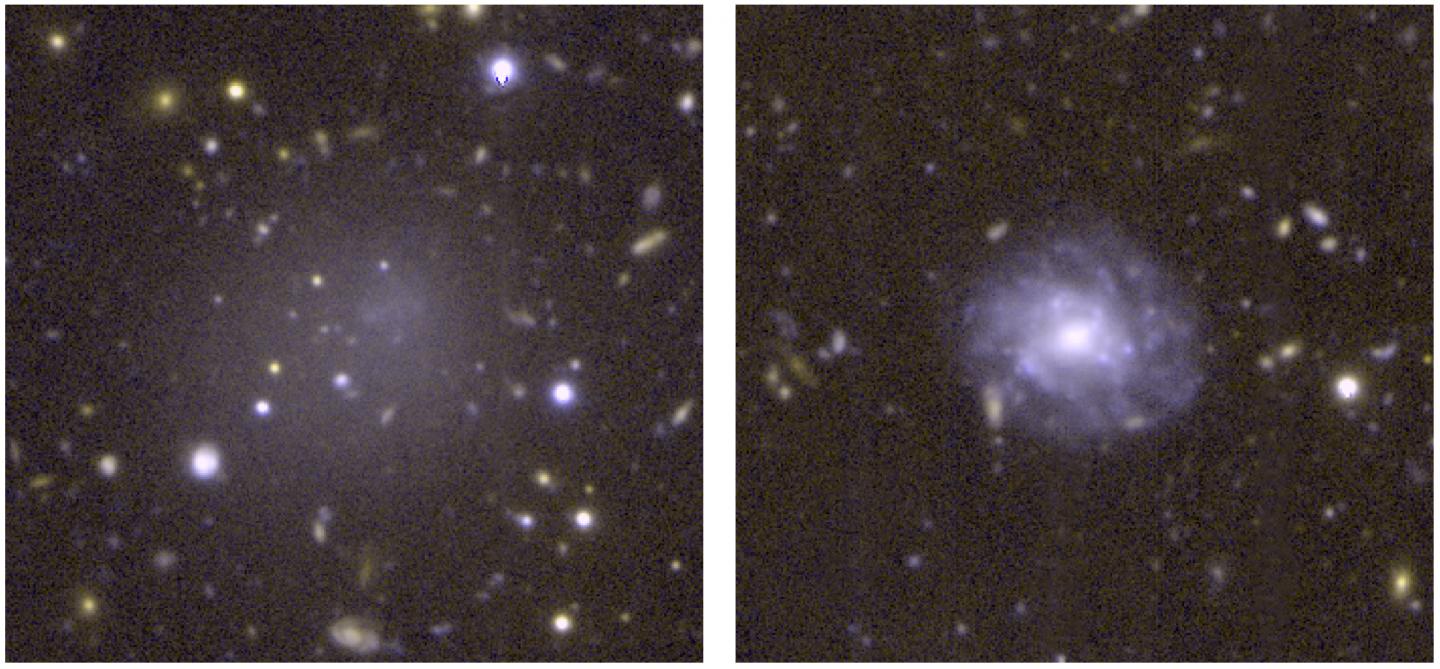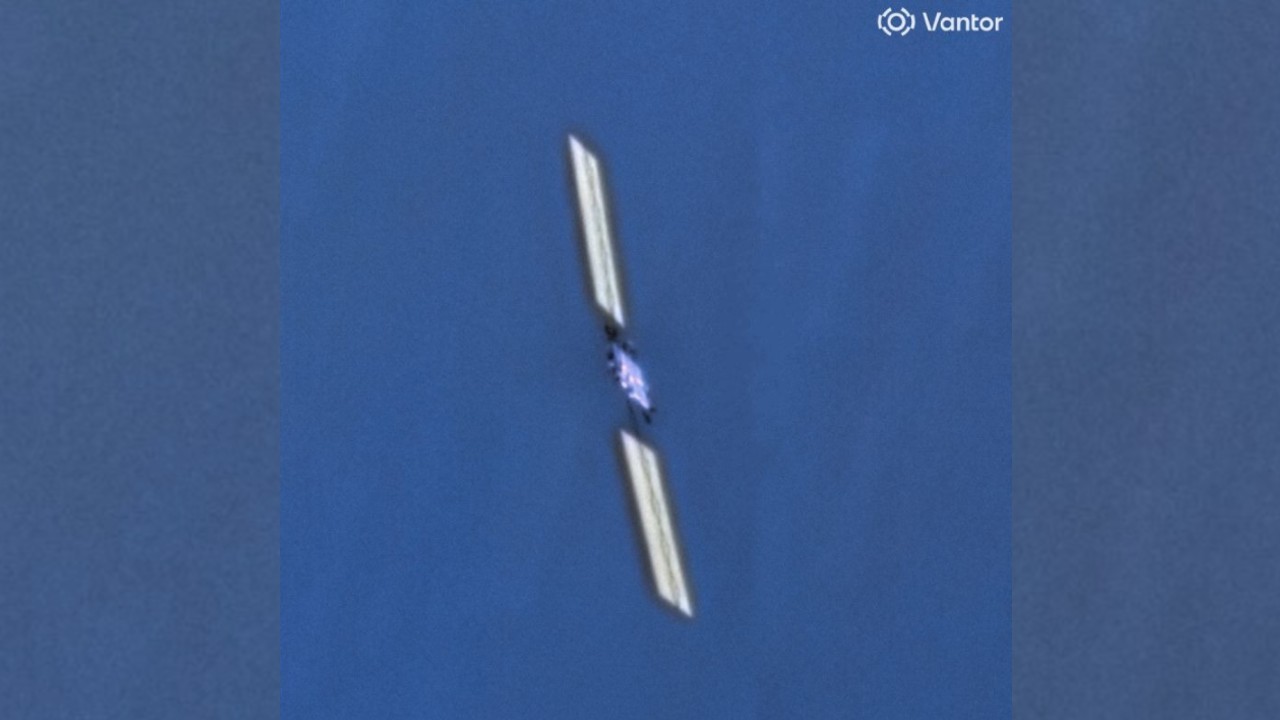This Ghostly Galaxy May Be a 'Living Fossil' from the Dawn of the Universe

Far out in the cosmos, a ghostly galaxy stands alone. It shines with only a faint glimmer of starlight, has hardly changed for eons — and astronomers have no idea why it's there or how it formed.
DGSAT I, discovered in 2016, is an ultradiffuse galaxy (UDG), meaning it is as big as a typical galaxy but gives off very little starlight. And this strange galaxy seems to break many of the rules that govern even similar UDGs.
Most other UDGs (a concept relatively new to astronomers) are found within crowded, roiling galaxy clusters. Astronomers believe violent collisions within those clusters spit these faint galaxies out like confetti from a cosmic party popper. [Photos: 65 All-Time Great Galaxy Hits]
But DGSAT I is all alone. Untroubled by galactic collisions or other cosmic upheaval, it has probably changed very little since it was born, according to a statement from the W. M. Keck Observatory in Hawaii.
To explain how the solitary DGSAT I formed, astronomers first needed to know what it was made of.
"The chemical composition of a galaxy provides a record of the ambient conditions when it was formed, like the way that trace elements in the human body can reveal a lifetime of eating habits and exposure to pollutants," co-author Aaron Romanowsky, a University of California Observatories astronomer and an associate professor at San Jose State University, said in the statement.
The team used the Keck Cosmic Web Imager, a light-measuring spectroscope installed on Hawaii's Mauna Kea.
Breaking space news, the latest updates on rocket launches, skywatching events and more!
The spectroscope takes an image of the galaxy and then measures the wavelength of light in each pixel of the image. Different elements emit different wavelengths of light, allowing astronomers a glimpse into the composition and temperature of the galaxy, according to the statement.
It turns out, this faint galaxy is not just pale with a lack of starlight but also anemic.
The galaxy has very little iron but normal amounts of magnesium. That is puzzling, the researchers said, because when stars die in violent explosions called supernovas, they typically release both of these metals. "We don't understand this combination of pollutants, but one of our ideas is that extreme blasts of supernovae caused the galaxy to pulsate in size during its adolescence, in a way that retains magnesium preferentially to iron," Romanowsky said.
Measurements also show that this galaxy likely took a long time to form, starting when the universe was very young and continuing to form until at least 3 billion years ago.
"One intriguing possibility is that some of these ghostly galaxies are living fossils from the dawn of the universe when stars and galaxies emerged in a much different environment than today," said Romanowsky. "Their birth is truly a fascinating mystery that our team is working on solving."
They reported their findings online Jan. 24 in the journal Monthly Notices of the Royal Astronomical Society.
- Our Milky Way Galaxy: A Traveler's Guide (Infographic)
- Galaxies: Collisions, Types & Other Facts
- The Universe: Big Bang to Now in 10 Easy Steps
Originally published on Live Science.


